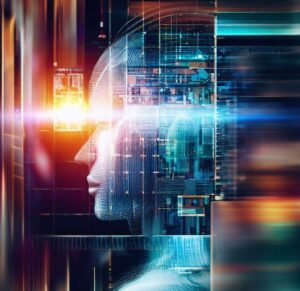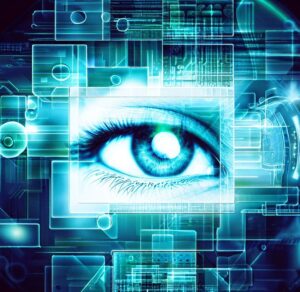Image recognition, at its most basic, is the ability of a machine or system to identify and process objects within a digital image or video. This fascinating feat of technology is an arm of artificial intelligence and is achieved via numerous algorithms and techniques working in tandem to simulate the human ability to understand and discern visuals. Image recognition has become an indispensable tool in a multitude of applications, affecting a host of industries and aspects of everyday life.
For instance, in the healthcare sector, image recognition is harnessed through medical imaging to aid in the diagnosis and treatment of diseases. This precise application of technology can discern abnormalities, such as tumours in brain scans or cancer cells in microscopic imagery, often far earlier and more accurately than human specialists.
In the transportation industry, self-driving cars employ image recognition to interpret their surroundings. By identifying traffic signals, pedestrians, other vehicles, and different elements of the road, these autonomous vehicles can navigate safely and efficiently, potentially revolutionizing how we traverse our cities.
Image recognition is also a key component of modern security systems. Facial recognition software can match digital images or video frames with a database of stored faces to confirm identities or track individuals. This is used in everything from unlocking smartphones to surveillance in airports or sensitive governmental buildings.

Underpinning the process of image recognition are several distinct but interconnected steps. The first of these is feature extraction. Here, raw data is processed to identify and isolate unique characteristics, or ‘features,’ that will help the machine identify the image. These can be shapes, textures, colours, or any other discernable element of the image.
Next, comes feature selection. After feature extraction, the system is often left with a wealth of features, not all of which will be useful for identifying the object in question. The most predictive features are selected, removing redundant information and helping the system focus on the critical attributes for identification.
The crucial step in the image recognition process is image classification. Here, the system uses the selected features to classify the image within a predefined group. For example, an image recognition system that has been trained to recognize animals might categorize an image as ‘dog’ based on identified features such as fur, four legs, and a certain shape of ears. Image recognition blends complex algorithms with machine learning to equip machines with a level of visual understanding. Fueled by advancements in technology and computing power, image recognition is paving the way for a myriad of innovations and breakthroughs that are transforming our world.
TensorFlow in Action: Image Recognition
Google’s TensorFlow is a powerful open-source software library for machine learning and artificial intelligence, and has been pioneering the realm of image recognition by providing an extremely productive environment for model development. With TensorFlow, developers can build complex machine learning models capable of analyzing and classifying images with a high degree of accuracy.
At the start of the TensorFlow image recognition process is data pre-processing. TensorFlow’s Image module boasts an extensive range of functions for loading and augmenting an image. These adjustments, which include cropping, resizing, and color modifications, are essential for creating a comprehensive dataset that reflects the diversity and variation of real-world visuals. It also helps to ensure that the model doesn’t learn erroneous associations and that the algorithm’s performance isn’t compromised by variations in the input image such as different angles and lighting conditions.
Once image pre-processing is completed, the next phase involves building the model. In this scenario, a Convolutional Neural Network (CNN) is often utilized due to its powerful image analysis capabilities. CNNs, which are a class of deep learning models, are distinctively suited to process visual information. They have an inherent ability to identify spatial hierarchies or patterns, such as the arrangement of facial features in a face or the contours and colors that define an object, thereby making them a perfect fit for image analysis.
The model is then trained using a process known as backpropagation. Backpropagation is an algorithm used in supervised learning of artificial neural networks that fine-tunes the weights of the neurons in order to minimize the difference between the predicted and the actual output. Remarkably, TensorFlow optimizes the training process by leveraging the parallel computing capabilities of GPUs, reducing the time needed to train models on large datasets.
After the model is trained, it undergoes evaluation using a validation dataset. This assesses its performance, ensuring it can correctly categorize unseen images, and adjustments are made as necessary to prevent overfitting (where the model learns the training data too well and performs poorly on new data) or underfitting (where the model cannot capture underlying trends in the training data).
Following the evaluation, the model is refined in the optimization stage. TensorFlow provides a suite of optimizers such as Adam, Gradient Descent, and RMSProp, which refine the model’s performance by adjusting several parameters. These optimizers are used to increase efficiency, and reduce computational costs, ensuring faster processing times and more accurate results.
TensorFlow’s sophisticated and high-performing approach to image recognition exemplifies the immense potential of machine learning. Through proficient handling of image data, intuitive model building, expedited training, rigorous evaluation, and precise optimization, TensorFlow garners a powerful image recognition system that has significant roles in diverse industries, from healthcare to autonomous vehicles and beyond.
Case Studies
One remarkable application of TensorFlow’s image recognition capabilities can be seen directly in Google Photos, a service utilized by hundreds of millions of people worldwide. Google Photos uses TensorFlow to automatically categorize the images in a user’s photo library, organizing them by aspects like what’s in the photo, where it was taken, and who is in it. This sophisticated feature simplifies photo storage and allows users to quickly find specific photos simply by typing keywords. For instance, if a user types ‘beach,’ Google Photos uses TensorFlow’s image recognition algorithm to pull up all photos containing beaches. This happens without users needing to manually tag or categorize their photos, greatly enhancing the user experience and making photo organization a breeze.

TensorFlow has also planted its feet in the farming industry, particularly in disease identification in plants. Misdiagnosis or delayed diagnosis of plant disease can have devastating effects on yield output, food security, and livelihoods. Traditional methods of plant disease identification, which often rely on the human eye, are prone to error and are not scalable for large farms.
TensorFlow has been utilized to develop software that can accurately and rapidly identify plant diseases from images. Farmers simply take pictures of their crops with a smartphone, and the app uses TensorFlow’s image recognition algorithms to identify any diseases present in the plant. Accurate diagnoses can then guide farmers to the correct treatment, helping them protect their crops, maximize their yield, and ultimately increase their income.
In one study, a TensorFlow-powered app was able to identify different diseases in cassava plants, a major staple crop in Africa, with an accuracy rate of up to 98%. This not only contributes immensely to food yield but is also an excellent example of how TensorFlow can empower users even in low resource settings and have a meaningful impact on global food security.
These are just two examples that showcase the power and potential of TensorFlow’s image recognition capabilities. From simplifying and enhancing the user experience on a widely used photo app to assisting farmers in protecting their livelihoods, TensorFlow is making robust strides in the realm of real-world applications, reinforcing its place as a pivotal tool in AI.
While TensorFlow offers a plethora of advantages like flexibility, scalability, and a comprehensive ecosystem, it’s worth mentioning its comparison with other image recognition tools. The significant edge TensorFlow has over different platforms is its capability for advanced visualisation, efficient memory usage, and perhaps, most importantly, the backing of a global community of researchers and developers pushing the boundaries of the tool. However, it’s not without its pitfalls. The learning curve could be challenging for beginners, as understanding the underlying concepts requires time and patience. Model creation also requires a more sophisticated approach compared to platforms such as Keras. Despite certain challenges, the scale and depth of TensorFlow’s capabilities make it a distinguishing tool in the realm of image recognition.
Future of TensorFlow in Image Recognition
The role of TensorFlow in the future of image recognition appears to be pivotal as AI and machine learning technologies continue to evolve. Newer inceptions in predictive maintenance, fraud detection, health monitoring etc., will likely be facilitated through TensorFlow powered image recognition techniques.
TensorFlow’s machine learning-capabilities allow it to identify intricate patterns that a human might not spot, ensuing potential advancements in numerous industries. As technologies advance and datasets grow, TensorFlow’s potential in image recognition is on track to push the boundaries of what’s attainable in the fields of AI and machine learning.
TensorFlow’s flexible and potent approach to image recognition has made it a leader in its field. Its vast applications in real-world products and services show its profound promise, marking a fascinating future for AI and machine learning.